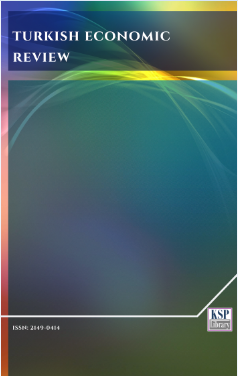Is rentier capitalism that bad? Rent, efficiency and inequality dynamics
Abstract
Abstract. The current economic context shows a tendency to inequality and rather weak growth. Rent-seeking behavior is often blamed for that. The purpose of this paper is to analyze the consequences, on the accumulation trajectory, of the existence of a rent levied by the rich on the poor. The model is inspired by the articles Stiglitz (1969), Schilcht (1975) and Bourguignon (1981). In particular, convex saving is used. We seek to see to what extent the introduction of a rent may call into question the Pareto-superiority of inequality proved by Bourguignon (1981) or alter the risk of decline highlighted in Mabrouk (2016). Within the limits of the assumptions of the model and of the numerical simulations carried out, we arrive at interesting and rather unexpected observations. Namely, a moderate rent levied by the rich on the poor may not only allow a Pareto-improvement of the economy and prevent the risk of decline, but also, it may unlock the economy from under-accumulation trap even if initial capital endowment is insufficient. The disadvantages of such a rent for the poor are felt only if the economy approaches or exceeds the golden rule where the net marginal productivity of capital is zero.
Keywords. Inequality dynamics, Neoclassical growth, Rent, Efficiency.
JEL. D99, E13, E21, E22, O41.
Keywords
References
Bourguignon, F. (1981). Pareto-superiority of unegalitarian equilibria in Stiglitz’ model of wealth distribution with convex saving function, Econometrica, 49(6), 1469-1475. doi. 10.2307/1911412
Dynan, K.E., Skinner, J., & Zeldes, S.P. (2004). Do the rich save more?, Journal of Political Economy, 112(2), 397-444. doi. 10.1086/381475
Jacobs, D. (2016). Extreme wealth is not merited, Oxfam Discussion Paper, Nov. 2015. [Retrieved from].
Keynes, J.M. (1936). General Theory of Employment, Interest and Money, [Retrieved from].
Mabrouk, M. (2016). The paradox of thrift in an inegalitarian neoclassical economy, Business and Economic Horizons, 12(3), 75-93. doi. 10.15208/beh.2016.07
Murphy, K.M., Shleifer, A., & Vishny, R.W. (1993). Why is rent seeking so costly to growth? The American Economic Review, 83(2), 409-414.
Oxfam Report, (2014). Oxfam report, “Even It Up”, [Retrieved from].
Schilcht, E. (1975). A neoclassical theory of wealth distribution, Jahrbücher für Nationalökonomie und Statistik, 189, 78-96.
Stiglitz, J. (2015a). New theoretical perspectives on the distribution of income and wealth among individuals: Part II: Equilibrium wealth distributions, NBER Working Paper, No.21190. doi. 10.3386/w21190
Stiglitz, J. (2015b). Inequality and economic growth, The Political Quaterly, 86(S1), 134-155. doi. 10.1111/1467-923X.12237
Stiglitz, J. (1969). Distribution of income and wealth among individuals, Econometrica, 37(3), 382-397. doi. 10.2307/1912788
DOI: http://dx.doi.org/10.1453/ter.v5i2.1634
Refbacks
- There are currently no refbacks.
.......................................................................................................................................................................................................................................................................................................................................
Turkish Economic Review - Turk. Econ. Rev. - TER - www.kspjournals.org
ISSN: 2149-0414
Editor: [email protected] Secretarial: [email protected] Istanbul - Turkey.
Copyright © KSP Library




